IMSML Website Article 28/2024: Resolution MEPC.362(79) - Amendments to MARPOL ANNEX IV
Today’s article continues with another resolution adopted by the 79th Session of the Marine Environment Protection Committee (MEPC 79), ie MEPC Resolution MEPC.362(79), Annex IV (adopted on 16 December 2022) which is applicable in Malaysia via Malaysian Shipping Notice (MSN 08/2023), Appendix I. The provision entered into force in Malaysia on 1 May 2024. The amendment is part of international conventions that are targeted the prevention and control of marine pollution from ships.
This amendment resolution of officially known as:
Amendments to the Annex of the Protocol of 1997 to Amend the International Convention for the Prevention of Pollution from Ship, 1873, as modified by the Protocol of 1978 Relating Thereto.
There is also a more industry friendly name for this amendment resolution. It is also known as:
Amendments to Marpol Annex VI (Regional reception facilities within Arctic Waters, information to be included in the bunker delivery note (BDN) and information to be submitted to the IMO Ship Fuel Oil Consumption Database).
Regulation 17
This regulation deals with ‘reception facilities’. In this regulation, there is a new Paragraph 2 dealing with regional arrangements. These apply when States have ‘unique circumstances’, and such regional arrangements are the only ‘practical means’ to satisfy the regulatory requirements.
The new paragraph 2 applies to:
[1] Small island developing States; and
[2] States which have coastlines that border Artic waters.
Note, that for [2] above, the regional arrangements only cover ports within Arctic waters of those States.
The new paragraph 2 makes it clear that guidelines developed by IMO have to be taken into account when developing a Regional Reception Facilities Plan. Development of a Regional Reception Facilities Plan is mandatory as the word ‘shall’ is used in formulation. However, the designing the content of this Facilities Plan is, on the face of it, appears more flexible as it is only subjected to ‘guidelines’. However, the requirement of consultation and circulation of the documents may put pressure on the State to comply with IMO guidelines.
There is a mandatory duty on each State party to consult with IMO and to circulate the drafted document among parties to the convention to receive feedback on the following:
[1] The way in which guidelines developed by the IMO have been taken into account when designing the Regional Reception Facilities Plan;
[2] Subject to guidelines developed by IMO, the particulars of the identified Regional Ships Waste Reception Centres; and
[3] if there are only limited facilities, the particulars of such ports.
The Details of Appendix V
The Appendix provides for ‘information to be included in the bunker delivery note’. Regulation 17(2) provides for a new item 9 and associated footnote added to Appendix V below item 8. This provides for ‘sulphur content (% m/m)’ in the following terms:
‘The flashpoint (C) specified in accordance with standards applicable to the Organization (i.e IMO), or a statement that the flashpoint has been measured at or above 70 °C’.
Note, that there is an asterisk reference to ISO 2719:2016, which applies the ‘Determination of flash point’, utilising the Pinsky-Martens closed cup method, Procedure A (for Distillate Fuels) or Procedure B (for Residual Fuels).
As a result of the newly inserted item 9 above, the previous item 9 is then re-numbered as a new item 10 in the list, see Regulation 17(3).
The Details of Appendix IX
Appendix IX is titled 'Information to be submitted to the IMO Ship Fuel Oil Consumption Database (Regulation 27). A new Appendix IX now provides for the following details to be submitted to IMO:
[1] Identity of the ship, including:
[a] IMO number;
[b] Period of the calendar year for which the data is submitted;
[c] Start date;
[d] End date.
[2] Technical characteristics of the shipowner, including:
[a] Year of delivery;
[b] Ship type (as defined in Regulation 2 of this Annex, or other (to be stated) );
[c] Gross tonnage (GT);
[d] Net tonnage (NT);
[e] Deadweight tonnage (DWT);
[f] Power output (rated power) of main and auxiliary reciprocating internal combustion engines over 130 kW (to be stated in kW);
[g] Attained EEDI (if applicable);
[h] Attained EEXI (if applicable);
[i] Ice class;
[3] Fuel oil consumption, in particular:
[a] Fuel oil type in metric tonnes; and
[b] Methods used for collecting fuel oil consumption data.
[4] Distance travelled;
[5] Hours underway;
[6] For ships to which Regulation 28 of MARPOL, Annex VI applies:
[a] Applicable CII, which could be in following formats:
Note, this is a reference to the 2022 Guidelines on Operational Carbon Intensity Indicators and the Calculation Methods (CII Guidelines, G1), see Resolution MEPC.352(78)
[i] AER, ie Annual Efficiency Ratio;
[ii] cgDist, ie Capacity Gross Ton Distance.
[b] Required annual operational CII, see resolutions MEPC.353(78) and MEPC.338(76);
[c] Attained annual operational CII before any correction, see resolutions at MEPC.353(78) and MEPC.355(78);
[d] Attained annual operational CII, see resolutions MEPC.352(78) and MEPC.355(78);
[e] Operational carbon rating, see resolution MEPC.352(78).
[7] CII for trial purpose (either none, one or more on a voluntary basis), see resolution MEPC.352(78) and MEPC.1/Circ.684 on Guidelines for voluntary use of the shipowner energy efficiency operational indicator (EEOI).
Thank you for reading IMSML Website Article 28/2024
Stay tuned for the next IMSML Website Article 29/2024: Resolution MEPC.363(79) - Amendments to Resolution MEPC.221(63)
Signing-off for today,
Dr Irwin Ooi Ui Joo, LL.B(Hons.)(Glamorgan); LL.M (Cardiff); Ph.D (Cardiff); CMILT
Professor of Maritime and Transport Law
Head of the Centre for Advocacy and Dispute Resolution
Faculty of Law
Universiti Teknologi MARA Shah Alam
Selangor, Malaysia
Tuesday, 14 May 2024
Note that I am the corresponding author for the IMSML Website Articles. My official email address is: uijoo310@uitm.edu.my
